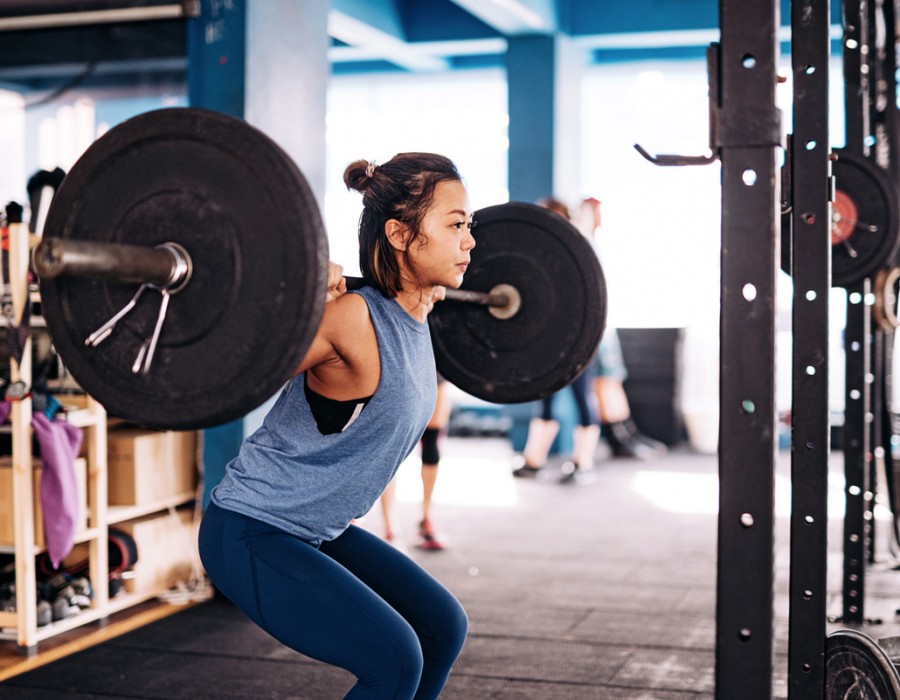Fitness and Performance
Lower back pain from squats: why this happens and how to avoid it

Squatting. One of those exercises we love to hate but which has so many benefits. If you’ve ever experienced back pain during or after squatting, then this is the blog post for you. Bodyset’s Head of Physiotherapy, Julia Petersbelk details the benefits of squats and how to avoid back pain…
Why squat?
Around the world, athletes in all sports squat regularly. But why? Research has shown that squatting has a direct impact on your body’s power – your ability to overcome resistance with speed. So, excellent squatting strength results in greater power and an increase in sprint speed. Even if you’re not a pro athlete, including squats in your training plan is incredibly valuable. Benefits include:
- Increased flexibility. Performing big movements under load improves your strength, range of movement in your joints and muscle length.
- Greater core strength. A well-executed squat requires all the major muscles in the body to work together. Your deep stabilising muscles keep your body steady and balanced throughout the exercise and, over time, your core strength will improve.
- Injury prevention. Squats work all the leg muscles together, providing great synchronisation for the body. A well-coordinated body is a more stable body; one that is less likely to become injured when running, jumping and performing daily tasks like picking up children or lifting boxes.
Squatting injuries
When performed properly, squatting is unlikely to result in injury. However, the spine is the most vulnerable of the joints during squatting and you may experience pain here. There are several reasons why this may happen:
- Previous injury to the lower back
- Poor squatting technique
- Weak core or other surrounding muscles
- Tight muscles and limited range of movement in joints, particularly the ankles.
- Incorrect or ill-fitting footwear, providing inadequate arch support
- Progressing weight/load too quickly when squatting
How to prevent back pain when you squat
Squat variations
Start by choosing a squat variation that’s right for you. If you’re new to squatting, then start with more beginner-friendly variations such as goblet squats or front squats. Note that barbell back squats are the most common for causing back pain as weight is loaded across the back. This more advanced version of a squat requires a lot of mobility in the mid-back and shoulder areas, which we often lack to begin with.
Starting position
Before you begin to squat, make sure you are in the correct starting position. Your feet should be facing forward. If your feet are turned out at an angle, your hips and knees are at a higher risk of injury. Your knees become less stable due to foot arches collapsing inwards, which will affect your form and can lead to back pain.
Spinal alignment
Proper spinal alignment is facilitated by maintaining a straight-ahead or upward gaze when squatting. This reduces the urge to lean too far forward, which places more stress on the spine. Make sure that you only squat as far as you feel in control and maintain good form. Concentrate more on form and control and less on depth. For some people squatting too deep can be detrimental.
Joint mobility
A high degree of ankle mobility is required to facilitate balance and control in all parts of the squat. If ankle joint flexibility is compromised, you may find that your heels raise off the floor when your knees are most flexed. As a result, you may compensate at your ankles, knees, hips and spine, potentially leading to injury when squatting with increased weight. Again, only squat as far as you can do skilfully. Outside of squatting, work on ankle flexibility to help improve your squat technique.
I am getting back pain from squatting; what should I do?
If you are still getting back pain despite following our tips above, it’s time to ask yourself these questions:
- Are you doing an effective warm-up? Priming all the body’s main muscles individually is important before a squat. Start with some glute work, core activation in a plank, stretching and range of movement exercises.
- Visit a physiotherapist. Experienced physiotherapists will conduct an assessment to identify the source of your back pain, addressing your squatting technique and biomechanics. Following this, a wide variety of treatment techniques may be used, alongside exercises to work on any issues identified in the assessment.
- Consult a personal trainer. They can teach you effective warm-ups and perfect your squatting technique.
There are many factors that can cause lower back pain during squats but many of these are avoidable. If you are continuing to experience pain or would like help on improving your squatting performance, then please get in touch to book an appointment. At Bodyset, our physiotherapists are on hand to help you improve your squatting technique, reduce your risk of injury, relieve back pain and enhance your sporting performance. With a thorough assessment, we can help you get back to training to your full potential, pain free.
Find a clinic near you and call 033 0333 0435 or book online.